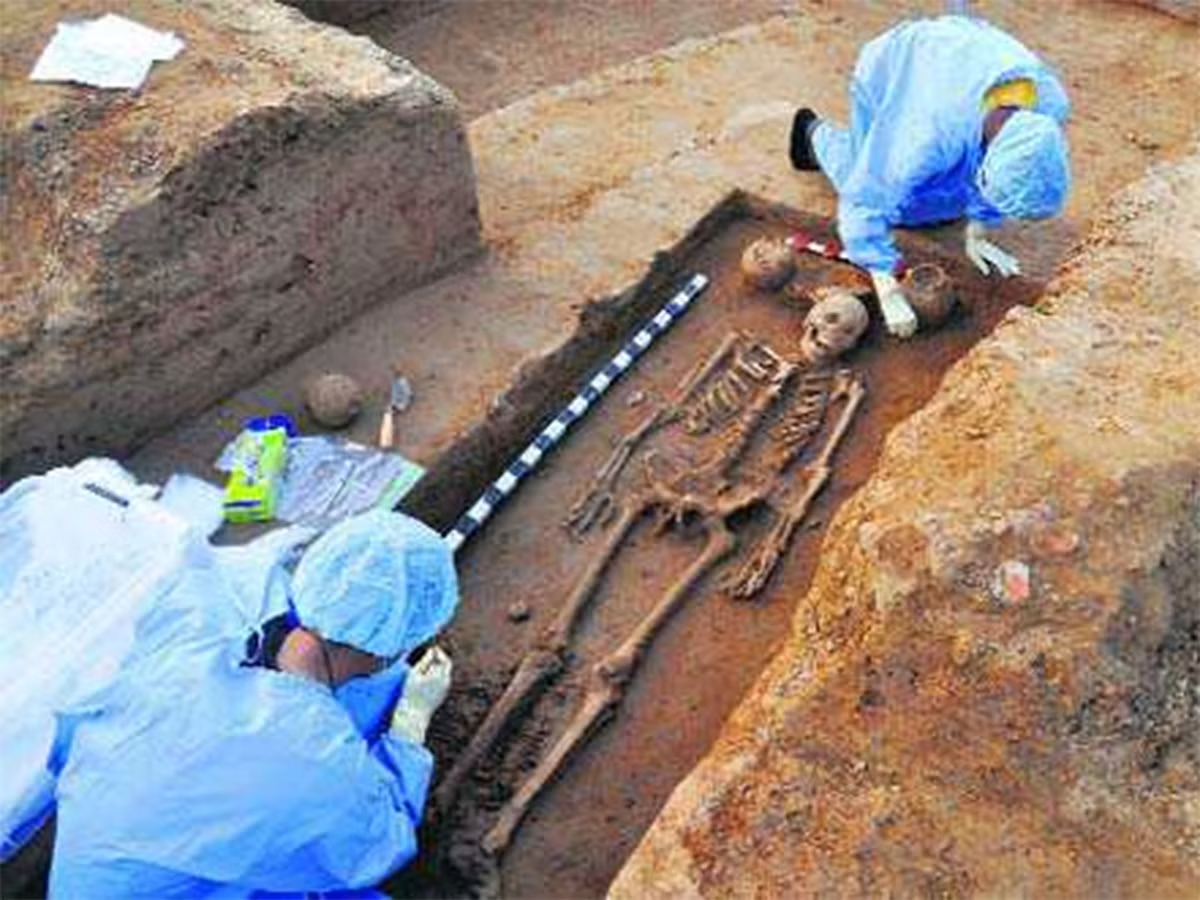Forensic experts from South Korea will now attempt to reconstruct the ancient people’s DNA
Image taken by excavation team shows skeletons discovered in an ancient cemetery in Rakhigarhi village of Hisar, India

Archaeologists in India have found a group of skeletons from one of the world’s most ancient civilisations, in a discovery which could provide clues to the origins of the first human settlements.
The remains date back to the Indus Valley Civilisation, which first emerged around 5,000 years ago and stretched across modern-day Pakistan, India and northeast Afghanistan. Experts say the “well-preserved” skeletons belong to two adult males, a female and a child. They were discovered in a cemetery at Rakhigarhi village in Hisar, a large Indus Valley (also known as Harappan) site that has been worked on by a team from Deccan University since 2012.

Speaking to The Tribune, site co-ordinator Professor Nilesh Jadhav said a forensic team from South Korea’s Seoul National University would be arriving in July to carry out a high-tech evaluation of the site.
“With the help of forensic experts, we will try to reconstruct their DNA,” Prof Jadhav said.

“We tried doing the same with the help of a Japanese anthropologist five years ago, when a Harappan-era graveyard was discovered at Farmana village in Rohtak district, but failed,” he added.
Regardless of the outcome of the DNA research, scholars already say the find has shed new light on the Indus Valley people.

Researcher Malavika Chatterjee said toys were found during the excavation including “figurines of animals and mythical characters”. She told the Hindustan Times: “A figurine of dog with a leash points towards their domestication aspect. Then we also found figurines of unicorns too, giving us impression about their mythical state of mind.”
Prof Jadhav said other items found in the graves hinted at an even bigger revelation. He said: “We have found some material like pottery with grains of food, and shell bangles located near or around skeletons which enabled us to conclude that the settlers believed in reincarnation.”





